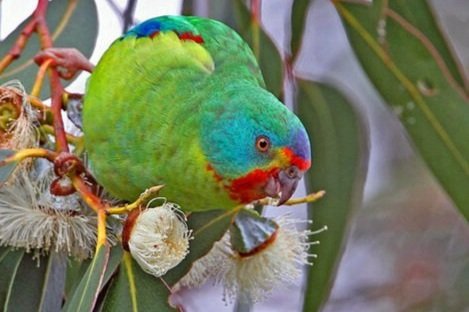
Biodiversity & Natural Capital
The Enviro-dynamics team specialise in the management and recovery of threatened flora and fauna species and ecological communities. The team specialise in the assessment of flora and fauna populations and vegetation community condition. Enviro-dynamics designs and delivers research projects, on-ground implementation of plans, and ecological modelling of populations and threats.
Threatened Species Projects
Enviro-dynamics has delivered and contributed to several threatened species recovery projects. We are committed to reversing population declines and securing the future for Tasmania’s threatened flora and fauna. We achieve this by developing threatened species recovery programs through collaboration with landowners, industry and the community, with the objective of improving the conservation status of high-priority threatened species.
Swift parrot Conservation Project
Threatened species conservation is the key part of our ‘Profit for Purpose’ ethos. Enviro-dynamics established a not-for-profit organisation the ‘Landscape Recovery Foundation’, to protect and restore biodiversity and ecological processes on a landscape scale. The Landscape Recovery Foundation has recently received funding through the Australian Governments ‘Saving Native Species Program’ to undertake conservation actions for the critically endangered swift parrot and the Graveside leek orchid. Visit the Landscape Recovery Foundation Page for further information on these programs (www.landscaperecovery.com.au).
Conservation Projects
Enviro-dynamics contributes to a number of conservation programs through funded projects and volunteer works. We have been involved in on-ground surveys to map the distribution of locally restricted species and breeding programs for orchid species.
Threatened species protection is an important part of many projects.
Vegetation Condition Assessments
We are experienced and qualified at conducting vegetation condition assessments (VCA’s) across the state. The VCAs provide a baseline condition assessment which is used to measure the health of vegetation over time. These assessments help to measure changes in vegetation condition as a result of fuel reduction burns, grazing regimes and feral species browsing.
Capturing condition data in field is an important part of undertaking Vegetation Condition Assessments
Conservation Offsets
Enviro-dynamics provides strategies and mechanisms to offset impacts to native vegetation from infrastructure development projects, subdivision and smaller-scale residential projects. Offset mechanisms can include negotiating conservation covenants and Part V Agreements on titles to offset the loss of vegetation communities or threatened flora and fauna, and plantings to replace significant trees.
Conservation Covenants & Part V Agreements












